Parasnath Temple Giridih 2 BCE Jain Temple
Parasnath Temple is a Jain temple located in the Parasnath Hills in the Giridih district of Jharkhand, India. It is one of the most important pilgrimage sites for Jains. The temple is dedicated to the 23rd Tirthankara, Parshvanatha.
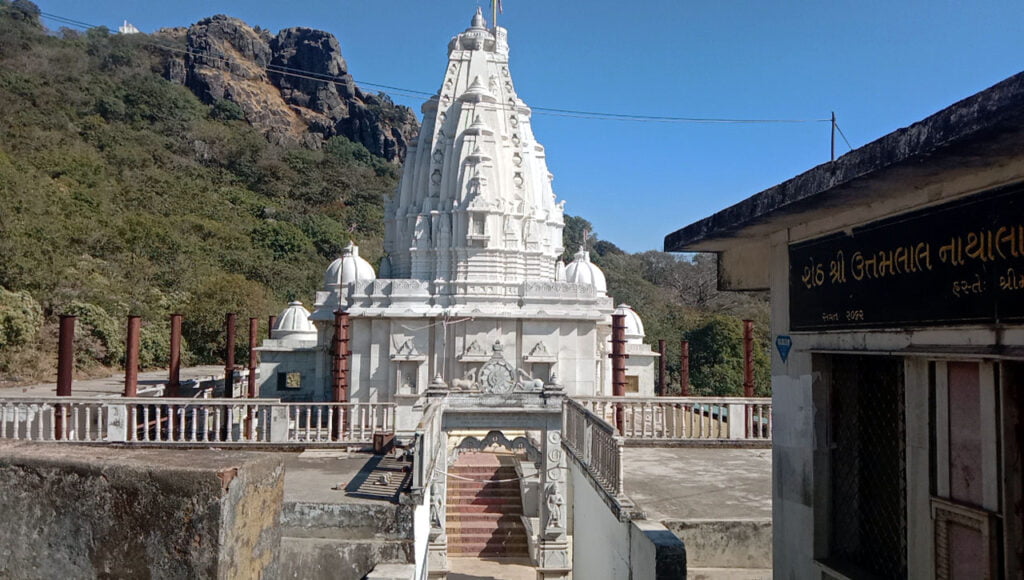
Contents
- 1 History of Parasnath Temple Giridih:
- 2 Legend of Parasnath Temple Giridih:
- 3 Architecture of Parasnath Temple Giridih:
- 4 Significance of Parasnath Temple Giridih:
- 5 Myths of Giridih Jain Temple:
- 6 Parasnath Temple Timing and Rituals:
- 7 Places to visit near Parasnath Temple Giridih:
- 8 FAQ:
- 8.0.1 What is the Parasnath Temple?
- 8.0.2 What is the history of the temple?
- 8.0.3 What are the architectural features of the temple?
- 8.0.4 What are the festivals celebrated at the temple?
- 8.0.5 What are the temple timings?
- 8.0.6 How to reach the temple?
- 8.0.7 Is there a dress code for the temple?
- 8.0.8 Can I take photos inside the temple?
- 8.0.9 Where can I stay near the temple?
- 9 How to reach Parasnath Temple Giridih:
- 10 Google Maps:
History of Parasnath Temple Giridih:
The temple is believed to have been built in the 2nd century BCE, and has been renovated and expanded several times over the centuries. The current temple complex consists of a number of temples, shrines, and other structures, including a 72-feet-tall (22 m) statue of Lord Parshvanatha, the 23rd Tirthankara.
The Parasnath Temple is a major pilgrimage site for Jains from all over India. The temple is particularly crowded during the Jain festival of Paryushan, which is celebrated for eight days in the month of August or September.
History:
The Parasnath Temple is believed to have been built in the 2nd century BCE by the Maurya emperor Ashoka. The temple was later renovated and expanded by the Gupta dynasty in the 4th and 5th centuries CE. In the 11th century, the temple was again renovated by the Chandela dynasty.
The Parasnath Temple has been a major pilgrimage site for Jains for centuries. In the 12th century, the Jain monk Hemachandra Suri is said to have visited the temple and composed a number of poems in praise of Lord Parshvanatha.
In the 16th century, the Parasnath Temple was damaged by the Mughal emperor Akbar. However, the temple was later repaired by the Jain community.
In the 19th century, the Parasnath Temple was again damaged by the British. However, the temple was once again repaired by the Jain community.
Read More>> Baidyanath Temple – Sacred Jyotirlinga with Location Dispute
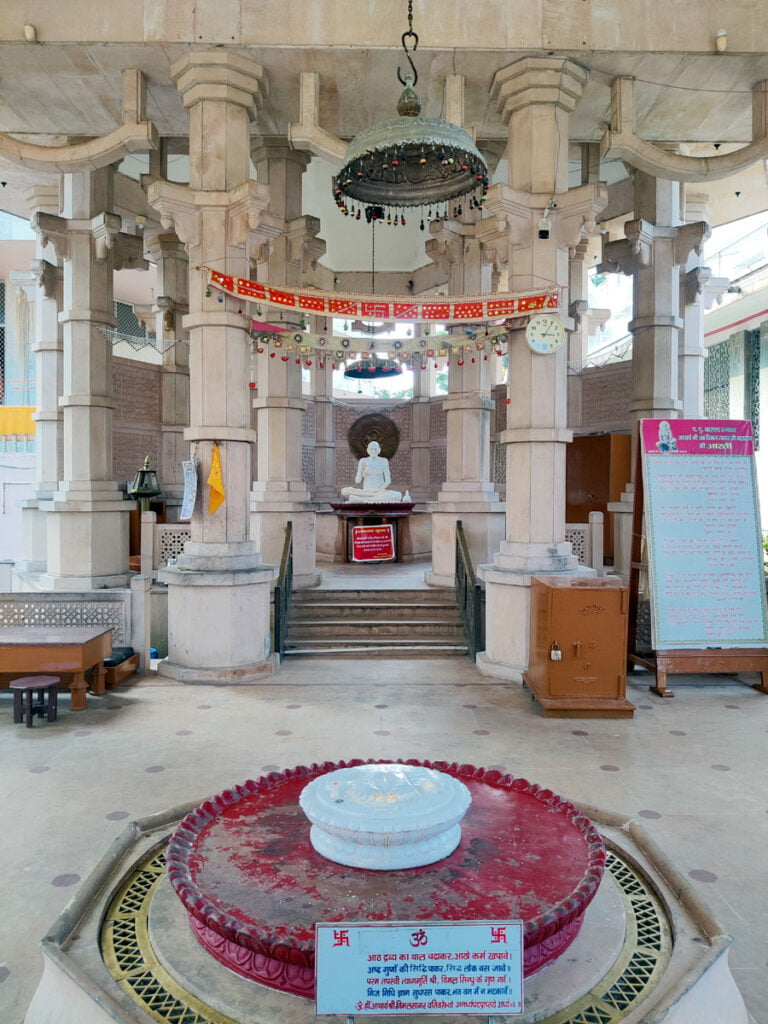
Legend of Parasnath Temple Giridih:
According to Jain legend, the Parasnath Hills were once a forest known as Madhyamakeya. The forest was inhabited by a yaksha named Marang Buru. Marang Buru was a powerful and benevolent yaksha who protected the forest and its inhabitants.
One day, a Jain monk named Parshvanatha arrived at the forest. Parshvanatha was a great teacher and he soon attracted a large following of disciples. Marang Buru was impressed by Parshvanatha’s teachings and he became one of his disciples.
Parshvanatha spent many years teaching in the forest. He preached the principles of ahimsa (non-violence), aparigraha (non-possession), and satya (truth). He also taught the importance of meditation and self-realization.
Eventually, Parshvanatha attained moksha (liberation from the cycle of birth and death) on the Parasnath Hills. His disciples built a temple on the spot where he attained moksha. The temple is known as the Parasnath Temple and it is one of the most important holy sites for Jains.
Read More>> Aundha Nagnath Temple: 8th Jyothirling with Divine Serpents
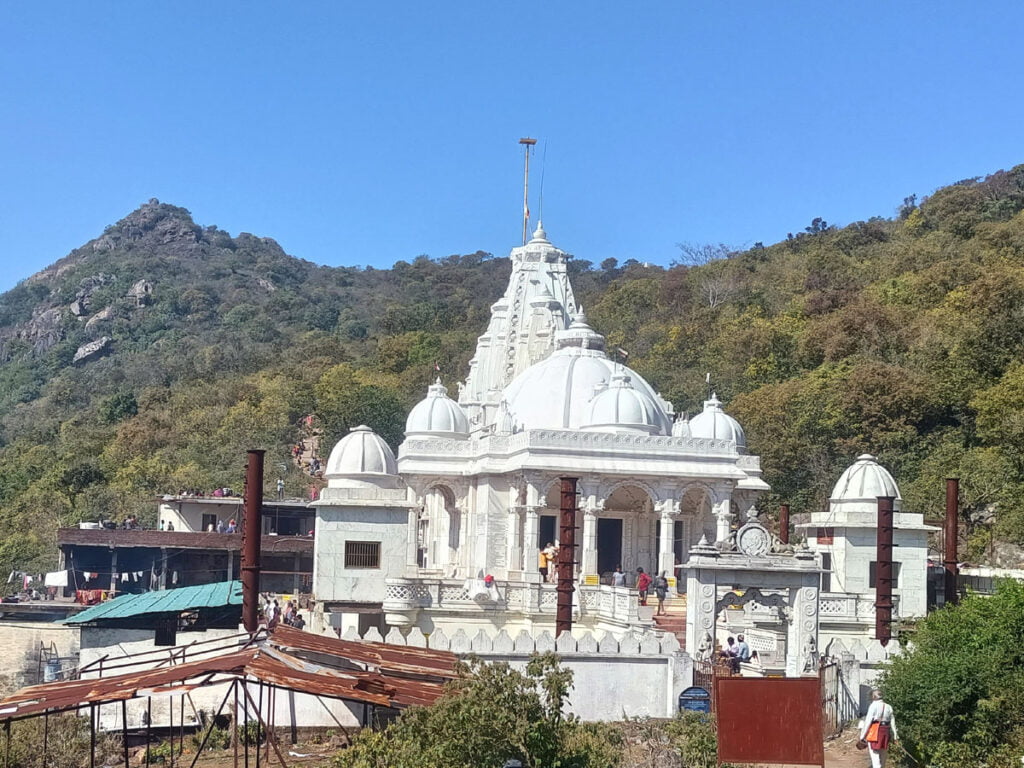
Architecture of Parasnath Temple Giridih:
The architectural style of these temples varies, with influences from different eras and regions. Here’s a glimpse into the diverse architectural landscape of Parasnath Temples:
1. Shikharji Temple:
- Dedicated to Adinath, the first Tirthankara.
- Believed to be the oldest temple on the hills, dating back to the 8th century AD.
- Built in the Nagara style of architecture, characterized by its pyramidal shikhara (tower) and intricate carvings.
2. Jal Mandir:
- Dedicated to Parshvanath, the 23rd Tirthankara.
- Located at the highest point of the Parasnath Hills.
- Built in white marble and features a unique blend of Mughal and Rajput architectural styles.
3. Vimalnath Temple:
- Dedicated to Vimalnath, the 13th Tirthankara.
- Known for its beautiful red sandstone carvings and ornate pillars.
- Built in the Indo-Islamic style, showcasing influences from both Hindu and Muslim architecture.
4. Chaubisi Tirthankar Temple:
- Dedicated to all 24 Tirthankaras.
- Built in the 19th century by Seth Hukumchand Jain.
- Features 24 identical shikharas, each representing a Tirthankara.
5. Ghantakarna Mahavir Temple:
- Dedicated to Mahavira, the last Tirthankara.
- Built in the 12th century AD.
- Features a unique bell-shaped shikhara, reflecting the name “Ghantakarna” (meaning “having bell-shaped ears”).
Read More>> Shirdi Sai Baba Temple Maharashtra
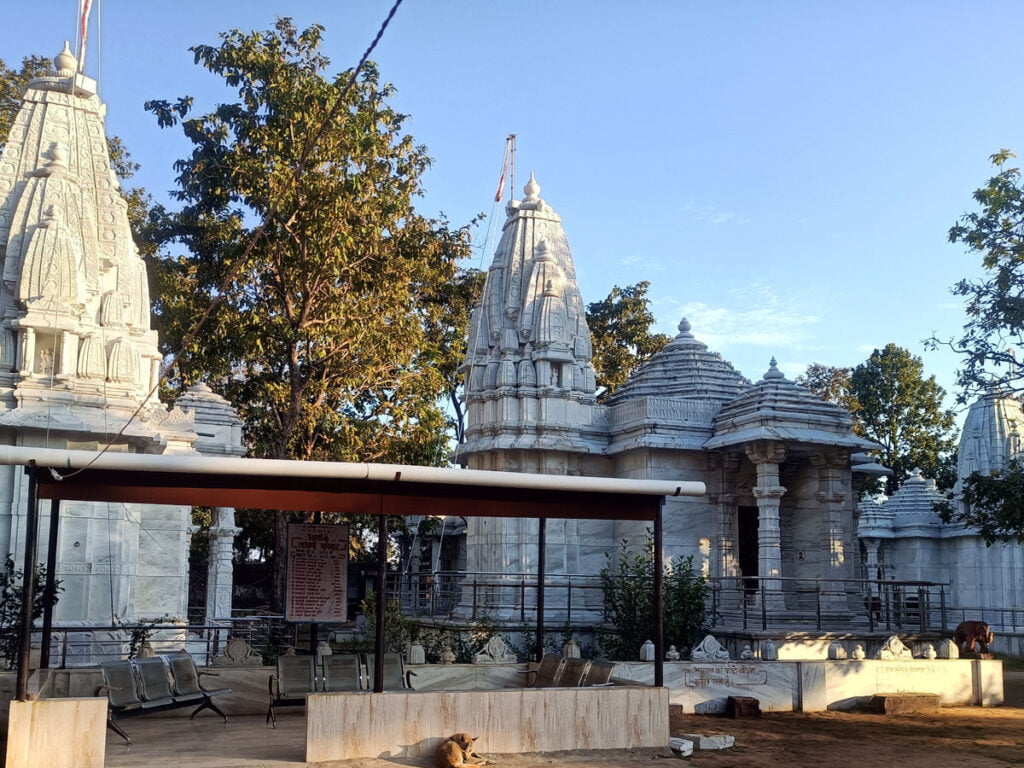
Significance of Parasnath Temple Giridih:
Religious Significance:
- Holiest Jain Pilgrimage Site: It is considered the holiest pilgrimage site for Jains, often called Sammed Shikhar. 20 out of the 24 Tirthankaras, the most revered figures in Jainism, attained moksha (liberation) on this hill.
- Ancient Shrines: Each Tirthankara has a dedicated shrine (gumti or tonk) on the Parasnath Hills, some believed to be over 2,000 years old. The main Shikharji Temple complex is a significant pilgrimage destination for Jains worldwide.
- Spiritual Atmosphere: Jains believe the entire hill is charged with sacred energy from the enlightened beings who attained moksha here, making it a powerful place for spiritual practice and meditation.
Natural Beauty:
- Scenic Mountain Range: Parasnath Hill, part of the Parasnath Hills range, is the highest peak in Jharkhand, offering breathtaking views of the surrounding landscape. Lush forests, waterfalls, and diverse flora and fauna contribute to its natural beauty.
- Biodiversity Hotspot: The area is recognized as a biodiversity hotspot, home to various endangered species like elephants, leopards, and tigers.
- Peaceful Escape: The remote location and serene atmosphere make it a popular destination for those seeking peace and nature connection.
It’s important to note:
- There are ongoing environmental concerns about potential mining activities in the area, which threaten the ecological balance and religious significance of the site.
- The Parasnath Hills are also culturally significant for the Santhal tribal community, who consider it their sacred mountain.
Read More>> Trikut Ganesh Temple Nanded
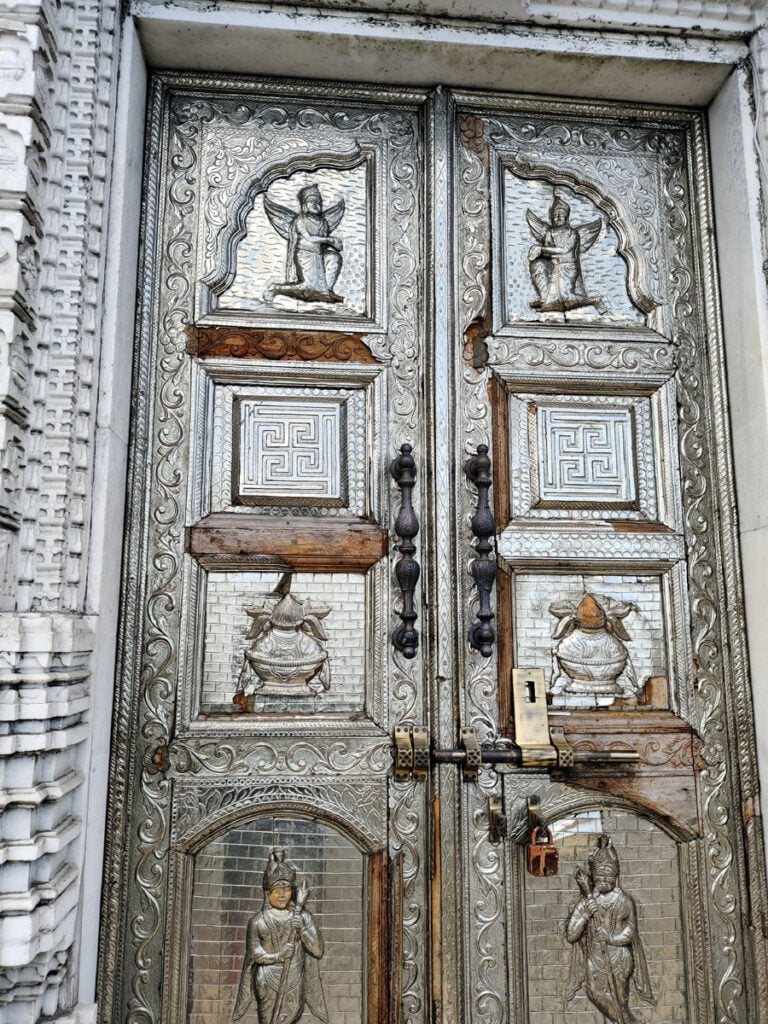
Myths of Giridih Jain Temple:
Origins and Construction:
- Divine intervention: Myths often attribute the construction of significant religious structures to divine intervention, with deities choosing the location or aiding in the building process.
- Supernatural feats: Legends might involve extraordinary feats of strength or skill by humans or mythical beings during construction.
- Hidden treasures: Myths sometimes weave stories of hidden treasures or secrets buried within the temple grounds.
Deities and Spirits:
- Miracles and blessings: Myths might recount miracles performed by the resident deity or stories of individuals receiving blessings after prayers or offerings.
- Hauntings and apparitions: Some myths might involve tales of ghosts or spirits residing in the temple, protecting it or offering guidance.
- Animal guardians: Myths could portray sacred animals acting as protectors of the temple or messengers of the deity.
Local Folklore and Practices:
- Unique rituals and customs: Myths might explain the origins or significance of specific rituals or traditions practiced at the temple.
- Folk heroes and saints: Local folklore might weave stories of individuals connected to the temple, portraying them as heroes or figures with special abilities.
- Taboos and restrictions: Myths might explain the reasoning behind certain restrictions or taboos associated with the temple or its deity.
Read More>> Jwala Ji Temple Jwalamukhi Kangra
Parasnath Temple Timing and Rituals:
Temple Timings:
The Parasnath Temple complex on Parasnath Hills remains open throughout the year, but the individual shrines have specific timings for darshan (viewing the deities):
- Shikharji Temple:
- Summer: 6:00 AM to 6:00 PM
- Winter: 7:00 AM to 5:00 PM
- Other Shrines:
- Generally open from 7:00 AM to 5:00 PM
It’s advisable to check the official temple website or call beforehand for any seasonal or occasional variations in timings.
Here are some important things to remember when planning your visit:
- Footwear is not allowed inside the temple complex. You can keep your shoes in designated cloakrooms.
- Dress modestly: Both men and women should dress respectfully, covering their shoulders and knees.
- Photography is not permitted inside the main shrines but may be allowed in other areas. Please check with temple authorities for specific guidelines.
- Silence and reverence: Maintain a peaceful and respectful demeanor while inside the temple complex.
Rituals at Parasnath Temple:
Jain pilgrims undertake various rituals during their visit to Parasnath Temple, each holding spiritual significance:
- Darshan: Viewing the deities in the shrines is the primary ritual. Devotees offer prayers, chant mantras, and express their reverence.
- Abhishek: Performing a sacred bath on the deities with milk, water, and other offerings is considered auspicious.
- Parikrama: Circumambulating the holy mountain and individual shrines is a customary practice symbolizing respect and seeking blessings.
- Meditation: The serene atmosphere of the temple complex makes it an ideal place for meditation and spiritual reflection.
Additional rituals:
- Offering alms: Donating food or other essentials to monks and needy individuals is considered meritorious.
- Participating in pujas: Special prayer ceremonies conducted by priests can be arranged for specific occasions or blessings.
Read More>> Subramanya Swamy Temple at Thiruchendur A Sacred Gem
Places to visit near Parasnath Temple Giridih:
- Madhuban:
- Madhuban is a beautiful location near Parasnath, known for its picturesque landscapes and serene surroundings. It’s an ideal spot for nature lovers and those seeking tranquility.
- Usri Falls:
- Usri Falls is a scenic waterfall located near Giridih. The lush greenery and the soothing sound of cascading water make it a popular spot for visitors.
- Jharkhandi Dham:
- Jharkhandi Dham is a religious site located around 10 km from Giridih. It’s known for its temples and is considered a sacred place by the locals.
- Khandoli Dam:
- Khandoli Dam is a popular picnic spot near Giridih. The dam offers a serene environment, and you can enjoy boating and other water activities here.
- Parasnath Hills:
- Apart from the Parasnath Temple, the Parasnath Hills themselves are significant. They are considered sacred in Jainism and offer trekking opportunities with beautiful views.
- Harihar Dham:
- Harihar Dham is a religious site located about 60 km from Giridih. It has a temple dedicated to Lord Shiva and attracts devotees from the region.
- Langta Baba Samadhi Sthal:
- This is a religious site dedicated to Langta Baba, known for his spiritual teachings. It is situated in Deoghar, which is not too far from Giridih.
Read More>> Sri Bhimeswara Swamy Temple Draksharamam: Sacred 5 Shiva Lingas
FAQ:
What is the Parasnath Temple?
The Parasnath Temple is a Jain temple located in the Parasnath Hills of Jharkhand, India. It is one of the holiest pilgrimage sites for Jains, as it is believed to be the place where 20 of the 24 Tirthankaras (saints) attained enlightenment.
What is the history of the temple?
The exact origins of the temple are unknown, but it is believed to be centuries old. The temple has been mentioned in several historical texts, including the Jain epic Kalpasutra.
What are the architectural features of the temple?
The temple is built in the Dravidian style of architecture. The main gopuram (gateway tower) is seven tiers tall and is adorned with intricate sculptures. The temple complex also includes several other shrines, halls, and mandapas (pavilions).
What are the festivals celebrated at the temple?
The temple celebrates several festivals throughout the year, including the Mahavir Jayanti, Paryushan, and Diwali.
What are the temple timings?
The temple is open from 6:00 AM to 12:00 PM and 4:00 PM to 8:00 PM.
How to reach the temple?
The temple is located in the Parasnath Hills, which are about 120 kilometers from Giridih. The nearest railway station is at Parasnath Station, which is well connected to major cities in India. By road, it is accessible from Giridih and other nearby cities.
Is there a dress code for the temple?
Devotees are expected to dress modestly. Men should remove their shirts and dhotis should be worn below the knee. Women should wear sarees or salwar kameez.
Can I take photos inside the temple?
Photography is not allowed inside the sanctum sanctorum (innermost shrine) of the temple. However, photography is allowed in other areas of the temple complex.
Where can I stay near the temple?
There are several hotels and guesthouses located near the temple.
How to reach Parasnath Temple Giridih:
By Air: The nearest airport to Giridih is Birsa Munda Airport in Ranchi, which is approximately 195 kilometers away. From the airport, you can hire a taxi or use public transportation to reach Giridih. Another option is the Netaji Subhash Chandra Bose International Airport in Kolkata, which is about 440 kilometers away.
By Train: Giridih has a railway station, and you can check the train schedules to reach there. The Giridih Railway Station is well-connected to major cities in Jharkhand and other parts of the country. Once you reach Giridih, you can hire local transportation to reach Parasnath Temple.
By Road: Giridih is well-connected by road, and you can reach it by bus or private vehicle. The town is situated on National Highway 19. You can hire a taxi or use buses from nearby cities like Ranchi or Dhanbad to reach Giridih. From Giridih, local transportation can take you to Parasnath Temple.
Local Transportation: Once you reach Giridih, you can hire a taxi, auto-rickshaw, or use local buses to reach Parasnath Temple. It’s advisable to ask locals for the best mode of transportation and the most direct route.

One Comment